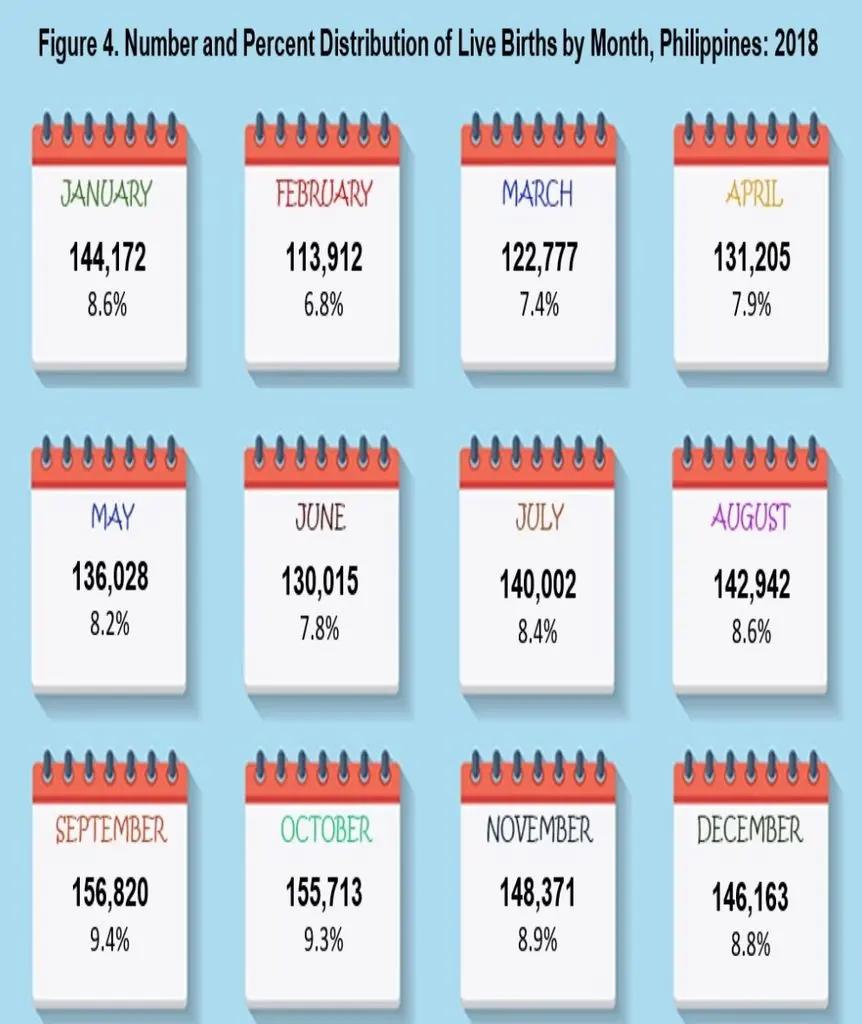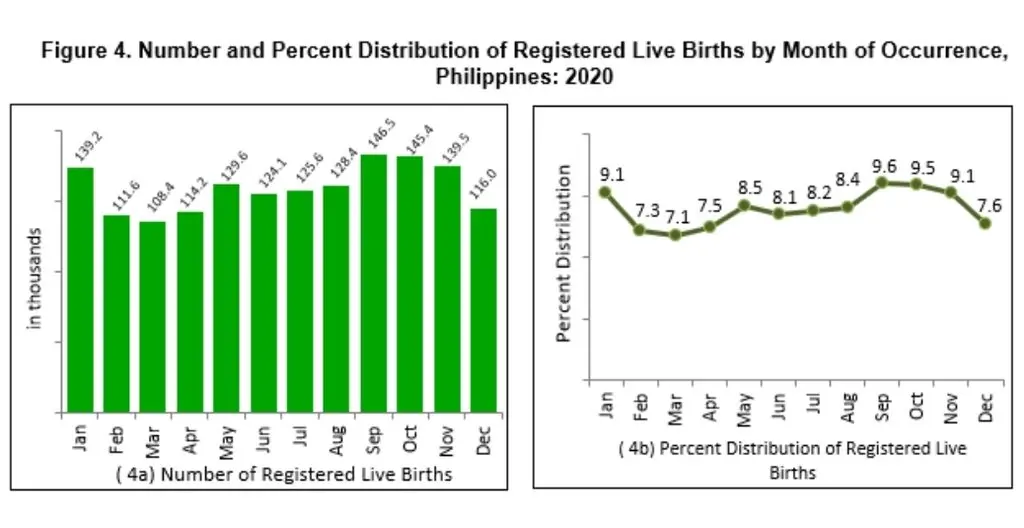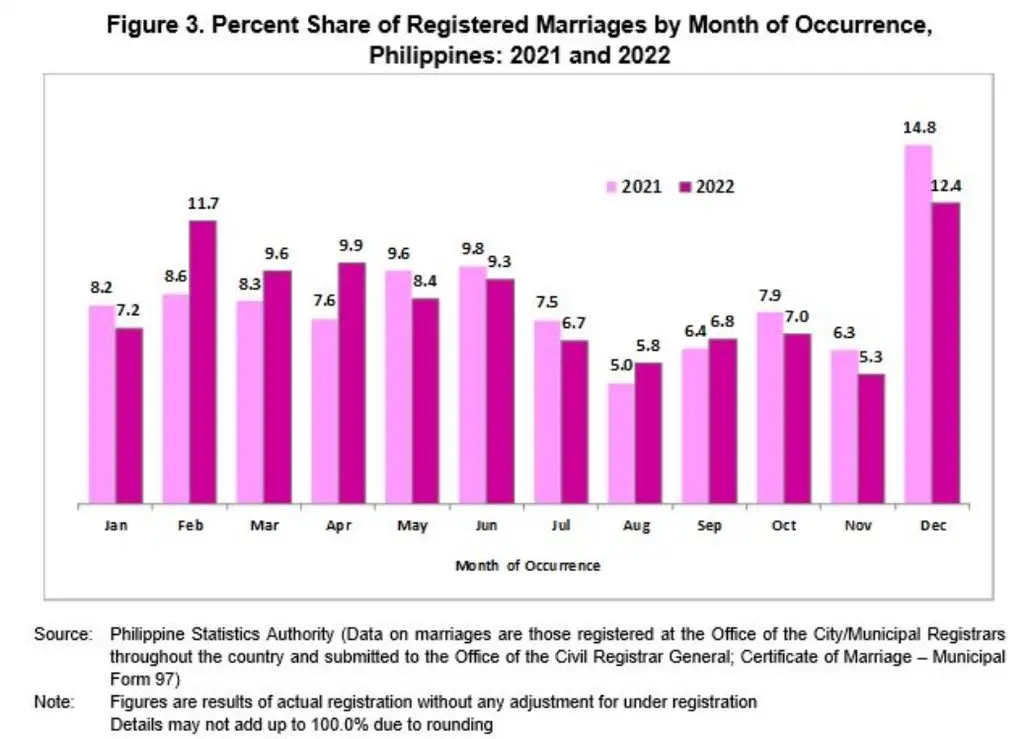
It’s not just Christmas singing icon Jose Mari Chan who “comes out” in September and makes Filipinos happy. It’s also the month when most live births in the Philippines happen.

Yes, September is the month when the most number of birthdays are celebrated in the country.
President Ferdinand Marcos Jr. just celebrated his birthday on Friday, September 13 — and got flak for it as his friends allegedly paid for the British pop band Duran Duran to come to the Philippines and perform for his private birthday bash.
His father Ferdinand Sr.’s birth date is September 11, 1917. Last Wednesday was his 107th birth anniversary.
Of the Philippines’ 17 presidents, four were born in the month of September. Aside from Marcos Sr. and Jr., second Commonwealth president Sergio Osmeña (September 9) and the country’s ninth president Diosdado Macapagal (September 28) were also born in September.
In my extended family (excluding aunts, uncles, etc.) of 17 people, three were born in September tied with August.
A friend who is a retired obstetrician-gynecologist says September was her busiest months when she was still practicing.
For many years, this trend has been reflected in official statistics, as typified in 2018.
“In 2018, most births occurred in September with 156,820 (9.4%) of the total births in the country. It was followed by the months of October (9.3%), and December (8.8%). The month of February had the least number of births in 2018,” the Philippine Statistics Authority (PSA) said in a December 27, 2019 press release on births in the Philippines in the year 2018. It was one of the few times when the PSA featured this trend in its releases, which even had a graphic on live births by month as this image below shows.

There were 156,820 births in September that year or 5,227 babies per day. In contrast, February that year had 113,912 births or 4,068 births per day.
The months with the lowest births in 2018 were February (6.8%), March (7.8%), June (7.8%), and April 7.9%.
In my family, there’s only one birthday celebrant in February and one in April.
Cake shops such as Goldilocks, Red Ribbon, and other birthday-related enterprises must therefore be quite busy during September and October and less busy during February.
A quick look at United Nations data on live births in the Philippines show that September and October have had the highest births on a monthly basis over the past decade, based on available data.
Why September?
Why does September have the most births in the Philippines?
The answer is related to why Jose Mari Chan “comes out” in September: Christmas. Most couples conceive or make their babies in the month of December or the peak of the Philippines’ long Christmas season that unofficially starts in September. It’s also the time of the year when couples are less busy and have more time for their partners.
Overseas Filipino Workers (OFWs) also more often than not take time off from work during December to be with their families. Many of them take two weeks to a month off and come home during the Christmas season to spend quality time with family.
And even among non-OFWs, December is when most leaves from work are taken — or forced to take. Many factories shut down during December for maintenance work.
Moreover, December is the month with the most number of holidays in the Philippines: two regular holidays and three special non-working holidays — December 8 (Immaculate Conception of Mary); Christmas Eve (December 24); Christmas Day (December 25); Rizal Day (December 30); Last Day of the Year (December 31). If you add the New Year’s Day as part of the long holiday break, that’s six long holidays.
According to the Association for Improvements in Maternity Services or AIMS, a United Kingdom maternity services website, around 90% of normal-term pregnancies last between 37 weeks (259 days) and 42 weeks (294 days).
Thus, if a couple conceived last week of December, the woman would likely give birth sometime September or early October.
What’s surprising to me is that even during the COVID-19 pandemic, this trend didn’t change. In other words, even if most couples were forced to stay at home, September still ended up as the month with the most live births.

According to PSA data on live births, September still had the most live births in 2019 and even in pandemic years 2020 and 2021, as well as in 2022. (Data for 2023 were still incomplete as of writing). The Philippines’ birth rate actually dropped during the pandemic year 2020 when close contact was discouraged.
The Philippines has seen a declining trend in registered live births. From 2012 to 2020 it fell from 1.7 million to 1.5 million, a decrease of 14.6%. The PSA says the “highest decline rate was noted in 2020 at minus 8.7%.”
February, on the other hand, is often the month with the least number of births, which would make the month of May as the least favorite for conception. May is commonly associated with the start of the rainy season in the country or close to June, also known as the wedding month.
But this may not apply in the Philippines because June is part of the rainy season. Who wants the rain to ruin their wedding?
Most marriages in the Philippines are actually during December — not the bride month of June — which could be another reason why most live births are in September and October.

According to PSA data, December had the highest number of registered marriages in 2021 and 2022 (55,599 marriages or 1,793 per day in December 2022) accounting for 14.8% in 2021 and 12.4% in 2022. (In 1970, however, it was January which had the highest number of marriages.)
Combine all the couples on their honeymoon and couples conceiving in December and it’s easier to see the big picture.
It turns out that we’re not the only country that has this trend with most births in September.
In the US, with more specific data generated, it’s been reported by USA Today that the most common birthday is September 9, followed by September 19, and 12.
“In fact, the entire top 10 list is made of September birthdays between Sept. 9 and 20,” the American news outfit says, tracing the relationship to the Christmas holidays, “…it could have something to do with the fact that many people have free time on vacation days they take around Christmas and New Year’s…”
The most common birth month in the US, however, is August, the same report qualifies.
The same trend has been noted in the United Kingdom (UK).
“A peak in births in late September show that more babies are conceived in the weeks leading up to and days after Christmas than at any other time of the year,” according to a December 2015 article by the UK’s Office for National Statistics.
“England and Wales is not the only country to have seen this trend. Similar analysis using data for New Zealand and the US shows a larger number of babies born in September,” the same article says.
The World Atlas, an online geography resource website, says “the top ten most common birthdays in the world are all between September 9th to 20th” with August being the most common birth month, however.
So, when people wonder why Filipinos are happier during the “ber months” and why the Philippine economy grows faster during this period than in other times of the year, think not just of Christmas but also of the many Philippine couples who marry in December, as well as the couples who happily conceive toward the end of the year. – Rappler.com
ALSO ON RAPPLER
- Why do Filipinos love to celebrate Christmas?
- Pinoy Christmas traditions, then and now
- Econ 101: Why roses are expensive on Valentine’s Day, and why rice may not be a good sub
- IN CHARTS: Marcos struggles in perking up business sentiment, taming inflation
- [In This Economy] Is the Philippines quietly getting richer?
- [In This Economy] Looks like PH economy will never get back on track. Here’s the data.